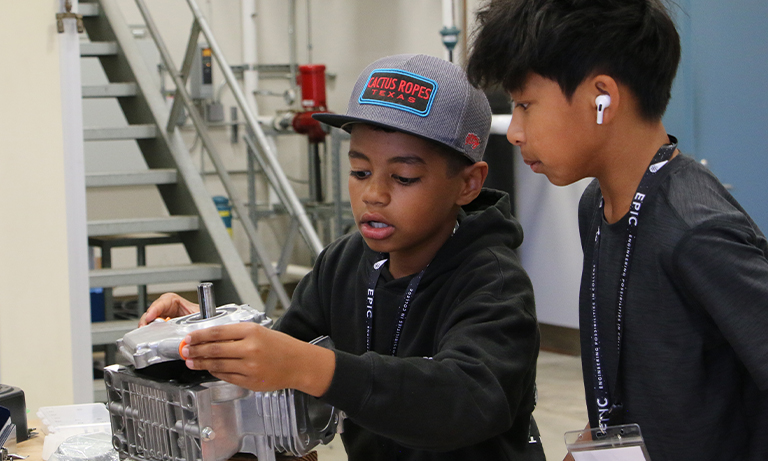Launch of the NASA/JPL Mars Perseverance Rover in July is the latest challenge for United Launch Alliance CEO Tory Bruno.
Tory Bruno knows the way to Mars is comprised of intense, complex and amazing rocket science.
So, the CEO of United Launch Alliance (ULA) and 1985 Cal Poly mechanical engineering graduate can’t help but add a joke to the end of a simplified explanation of the physics required for a trip to the red planet.
“All you have to do is go out to the SLO golf course with a friend and have them hold up a plastic cup and start running away from you as fast as they can,” Bruno said. “Then hit a golf ball really, really hard. Hard enough that it will travel entirely around the world, passing you and landing into the cup, while your friend is running. Piece of cake.”
Bruno, who is focused on Mars these days because ULA’s Atlas V 541 rocket is tentatively scheduled to launch the NASA/JPL Mars Perseverance Rover from Cape Canaveral, Florida on July 22, could add that piece of cake is baked with millions of ingredients by thousands of chefs using hundreds of cooking temperatures because the challenges of interplanetary flight are multiple.
Bruno, who has been ULA’s CEO since 2014 after working as an engineer at Lockheed Martin, said distance, speed and different orbital paths make “precision and timeliness” the key to reaching a planet more than 250 million miles away.
“Because the Earth is closer to the Sun than Mars, it orbits faster than Mars, periodically catching up to, and passing Mars,” he said. “To make the trip, we must wait until this July, when Earth is overtaking Mars, and then launch Perseverance into a long arc that will speed out in front of Earth, aiming at a point millions of kilometers ahead of Mars and just intersecting the Martian orbit when Mars catches up to that point.”
Bruno said there’s a lot of pressure to launch the Perseverance Rover, which will study the planet’s habitability and seek signs of past microbial life, during a narrow window between July 17 and Aug. 11.
“We literally have to wait for the planets to align in order to make this trip,” he said. “Because of the big difference in the Earth and Mars orbital periods, we can only travel between them once every 26 months. If something goes wrong at the launch site, or even if we get Florida thundershowers every morning during the window, we could easily be pushed out of the opportunity, leaving us to wait another two years for the chance to try again.”
Bruno said ULA has a lot of experience in dealing with the pressures of interplanetary flight, noting that “Mighty Atlas,” has been employed on all of America’s missions to Mars.
“We call this one Mars 2020-20 because it is our 20th mission to the Red Planet,” he said.
In 2018, Bruno told students at Cal Poly that for ULA, the most important launch is always the “next one.” He said that still holds true but indicated the nature of Mars Perseverance mission may have some added significance.

“We specialize in the most critical and most difficult missions, so every launch is incredibly important,” Bruno said. “But Mars Perseverance is a one-of-a-kind spacecraft with a mission that could fundamentally change humankind’s perception of our place in the universe. So, yes, we feel the weight of this responsibility.”


